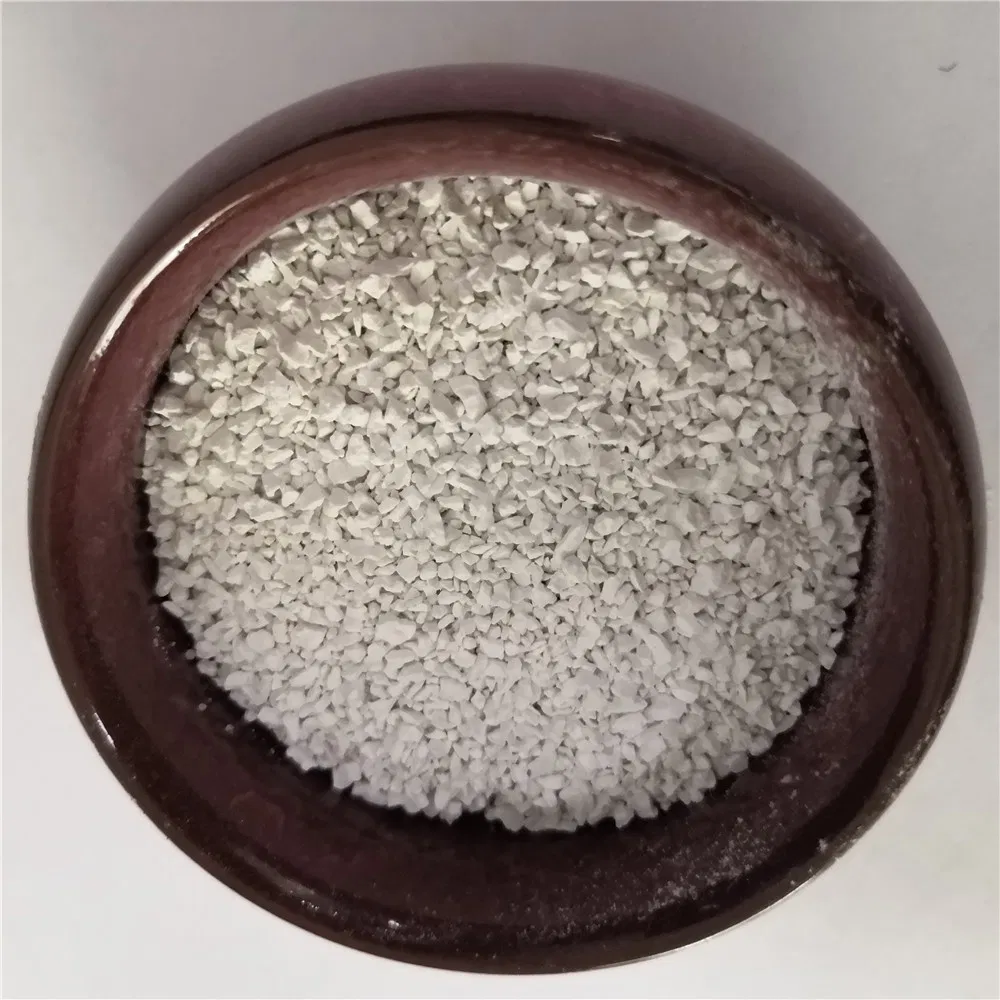20
2025
-
02
Understanding Calcium Hypochlorite Decomposition: Causes and Effects
Calcium hypochlorite (Ca(OCl)₂) is a powerful oxidizing agent commonly used in pool sanitization, water treatment, and industrial cleaning. However, this chemical can undergo decomposition under certain conditions, leading to the release of hazardous substances like chlorine gas and oxygen. In this blog, we will dive into the decomposition process of calcium hypochlorite, the factors that influence it, and how to handle it safely to avoid accidents.
Understanding Calcium Hypochlorite Decomposition: Causes and Effects

Introduction: What is Calcium Hypochlorite Decomposition?
Calcium hypochlorite (Ca(OCl)₂) is a powerful oxidizing agent commonly used in pool sanitization, water treatment, and industrial cleaning. However, this chemical can undergo decomposition under certain conditions, leading to the release of hazardous substances like chlorine gas and oxygen.
In this blog, we will dive into the decomposition process of calcium hypochlorite, the factors that influence it, and how to handle it safely to avoid accidents.
What Happens During the Decomposition of Calcium Hypochlorite?
Calcium hypochlorite decomposes when exposed to moisture, heat, or incompatible substances. The chemical decomposition process involves the breakdown of calcium hypochlorite into calcium chloride (CaCl₂), oxygen (O₂), and chlorine gas (Cl₂). The decomposition can occur rapidly under certain conditions, releasing toxic gases and heat.
Chemical Reaction of Decomposition:
The decomposition of calcium hypochlorite can be represented by the following reaction:
This reaction shows that, as the compound breaks down, it releases oxygen and chlorine gas, both of which can pose serious risks to health and safety.
Factors That Influence Calcium Hypochlorite Decomposition
Several factors can accelerate the decomposition of calcium hypochlorite:
Heat Exposure: High temperatures can increase the rate of calcium hypochlorite decomposition, leading to rapid release of chlorine gas. This is especially dangerous in confined or poorly ventilated spaces.
Moisture: Exposure to water or moisture can trigger the breakdown of calcium hypochlorite. When the chemical comes into contact with water, it releases chlorine gas and oxygen, which are both hazardous when inhaled.
Chemical Reactions: Incompatible chemicals, such as acids or ammonia, can react with calcium hypochlorite, causing it to decompose more quickly and release harmful gases. Always avoid mixing calcium hypochlorite with other substances unless specified by the manufacturer.
Storage Conditions: Improper storage can also influence the rate of decomposition. Storing calcium hypochlorite in warm, damp, or humid environments can accelerate its breakdown, increasing the risk of fire, explosion, or the release of toxic gases.
Dangers of Decomposition: Chlorine Gas and Oxygen
The decomposition of calcium hypochlorite is dangerous primarily because it can release chlorine gas, a toxic substance that can cause severe respiratory issues, eye irritation, and even death in high concentrations.
Chlorine Gas:
Chlorine gas is highly toxic when inhaled. It can cause choking, coughing, eye irritation, and damage to the respiratory system. Prolonged exposure or inhalation of high concentrations can be fatal.
Oxygen Release:
The oxygen released during decomposition is a fire hazard, as it can fuel combustion. If calcium hypochlorite decomposes near flammable materials, it can increase the risk of fire or explosion.
How to Prevent Calcium Hypochlorite Decomposition
To minimize the risk of decomposition and its associated dangers, follow these guidelines:
Store in a Cool, Dry Place: Always store calcium hypochlorite in a cool, dry area, away from moisture and heat sources. This will slow down the decomposition process and prevent the release of harmful gases.
Use Proper Containers: Ensure that calcium hypochlorite is stored in airtight, non-reactive containers to prevent exposure to moisture and air, which can trigger decomposition.
Avoid Mixing with Other Chemicals: Never mix calcium hypochlorite with acids, ammonia, or other reactive substances. Always check labels and safety data sheets to ensure compatibility.
Ventilation: When working with calcium hypochlorite, ensure you are in a well-ventilated area to reduce the risk of inhaling chlorine gas. Always work in areas with proper exhaust systems to allow the safe release of any gases.
Temperature Control: Keep calcium hypochlorite away from high temperatures. Storing it at temperatures above the recommended range can accelerate decomposition, leading to hazardous conditions.
Conclusion: Handle Calcium Hypochlorite with Care
Understanding the decomposition of calcium hypochlorite and the associated risks is crucial for anyone who uses this chemical. By following proper storage, handling, and safety guidelines, you can avoid the dangers of chlorine gas release, oxygen buildup, and other hazards associated with decomposition.
At Aguachlon, we provide high-quality calcium hypochlorite that meets the highest standards of safety and effectiveness. To ensure the safe use of this chemical, be sure to follow all safety precautions and consult with professionals if necessary.
Order calcium hypochlorite from Aguachlon today, and make sure to always handle it with care to maintain a safe working environment!
decomposition of calcium hypochlorite,calcium hypochlorite decomposition,calcium hypochlorite breakdown,calcium hypochlorite hazards,safe handling of calcium hypochlorite
undefined





